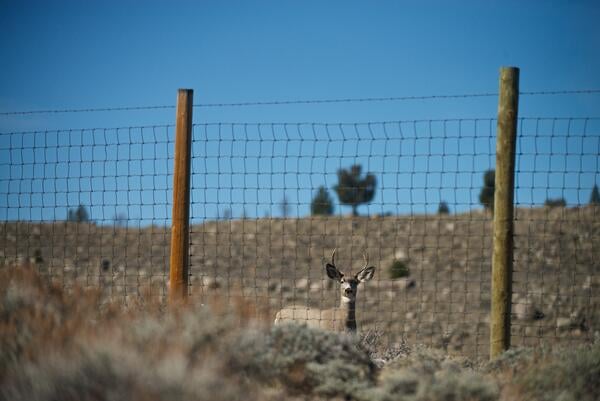A collaborative effort led by the U.S. Geological Survey has resulted in the publication of a new set of maps documenting the movements of ungulates, or hooved mammals, across the western United States. The fourth volume of the “Ungulate Migrations of the Western United States” report series provides valuable insights into the migration routes and critical ranges used by these animals, aiding in the conservation efforts of wildlife agencies and other stakeholders.
Expanding the Scope
The latest volume, titled “Ungulate Migrations of the Western United States: Volume 4,” documents the migrations of 33 mule deer, pronghorn, and elk herds across various states and Tribal lands. This edition marks the first time that Oregon, Colorado, and the Pueblo of Tesuque in New Mexico have been included in the report series. With the addition of these new maps, the total number of unique herds documented across 10 states has reached 182.
Matt Kauffman, the lead author and a wildlife biologist with the USGS Wyoming Cooperative Fish and Wildlife Research Unit at the University of Wyoming, expressed his admiration for the collaborative effort: “I’m impressed with how the team has worked together to adopt a standard set of methods to create robust migration maps of these ungulates across the West.”
Navigating Obstacles
As human development continues to expand across the American West, ungulates face increasingly challenging obstacles during their seasonal migrations. From new subdivisions and energy development to impermeable fences and high-traffic roads, these animals must navigate a complex landscape to access the most nutritious plants and avoid deep snow.
The migration maps provide critical information for managers, policymakers, NGOs, and private landowners working to minimize the impact of human activities on wildlife. By identifying areas where migrations overlap with existing and potential obstacles, stakeholders can make informed decisions to protect these vital corridors.
Supporting Conservation Efforts
The importance of these migration maps for conservation efforts cannot be overstated. Blake Henning, chief conservation officer at the Rocky Mountain Elk Foundation, emphasized the significance of this work: “To best conserve and protect the habitat used by migrating elk, mule deer, moose and pronghorn, we have to know exactly where these species move across the landscape. That’s why this mapping work is so important—it’s to ensure their future health and well-being.”
Informing Land Use Decisions
The maps featured in the report series have already been used to inform leasing decisions for oil and gas development, and they can also provide valuable guidance for siting future renewable energy projects. As an example, the Arizona Game and Fish Department utilized these maps to engage in informed conversations with landowners and solar developers about managing wildlife corridors through a planned solar facility.
Jeff Gagnon, statewide connectivity biologist at the Arizona Game and Fish Department, explained, “By using these migration maps and data, the Arizona Game and Fish Department was able to have informed conversations with landowners and solar developers about managing for wildlife corridors through a planned solar facility. These efforts will hopefully allow ungulates to continue their seasonal migrations.”
Collaborative Effort
The fourth volume of the report series is the result of a collaborative effort involving managers from various state wildlife agencies, as well as representatives from the U.S. Forest Service, U.S. Fish and Wildlife Service, National Park Service, Bureau of Land Management, Navajo Nation Department of Fish and Wildlife, Pueblo of Tesuque Department of Environment and Natural Resources, and Shoshone & Arapaho Tribes Fish and Game, among other partners.
Ongoing Mapping Efforts
Thanks to funding from the USGS and the Rocky Mountain Elk Foundation, mapping efforts by partners are ongoing, with a fifth volume of migration maps currently in preparation. The Corridor Mapping Team, established in 2018, continues to work as a state-Tribal-federal partnership to map ungulate migration corridors using standard techniques.
To explore the migration routes and ranges in more detail, interested parties can visit the interactive www.westernmigrations.net portal or download the map files from www.sciencebase.gov.
If our reporting has informed or inspired you, please consider making a donation. Every contribution, no matter the size, empowers us to continue delivering accurate, engaging, and trustworthy science and medical news. Independent journalism requires time, effort, and resources—your support ensures we can keep uncovering the stories that matter most to you.
Join us in making knowledge accessible and impactful. Thank you for standing with us!

